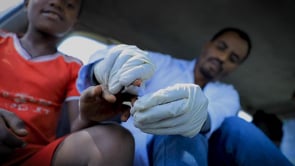Examining the spread of malaria in Ethiopia
Collaborator(s): Armauer Hansen Research Institute (AHRI), Ethiopia
Countries: Ethiopia
Published: 10/12/2019
Examining the spread of malaria in Ethiopia
The aim of the project “Examining the spread of malaria in Ethiopia” is to generate detailed information on parasite kinetics shortly after infection detection and also determine the duration of infection.
In Ethiopia, they are currently investigating the epidemiology of malaria in settings where malaria control has been highly effective; in an area that is of low endemicity and has been for a long time. In these studies, it is quantified the longitudinal dynamics and infectivity of asymptomatic Pv and Pf infections in comparison with clinical cases.
Ethiopia witnessed a substantial decline in malaria prevalence in the last two decades following the widescale introduction of LLINs, RDT, AL, and training and deployment of 30K health extension workers in 2005. The epidemiology of malaria is different in Ethiopia compared to most of Africa. P. vivax is highly endemic in most settings contributing towards 40% of the overall infections the country reports that vary temporally and spatially. The country contributed towards 9% of global P. vivax burden in 2017. Malaria transmission is highly heterogeneous.
With this project, it had been recently set up a longitudinal study in Adama, a site where both Pf and Pv occur. Whereby they recruit community members positive with 18S based qPCR for a 2½ month intensive to follow up that consists of finger-prick sampling twice weekly and membrane feeding on 14 days interval followed by monthly sampling for the subsequent year.
How this works? The project does community engagement ahead of the study and recruits volunteer individuals to donate finger prick in microtainer tubes for eligibility screening using 18S based qPCR that happens the same day. Then they screen 40-50 people in the villages near Adama and transport blood to AHRI in Addis. Results are ready the next morning and communicated with field team to request for the first membrane feeding experiments. In parallel with the cohort, they also recruit clinical cases to compare infectivity with asymptomatic cohort.



